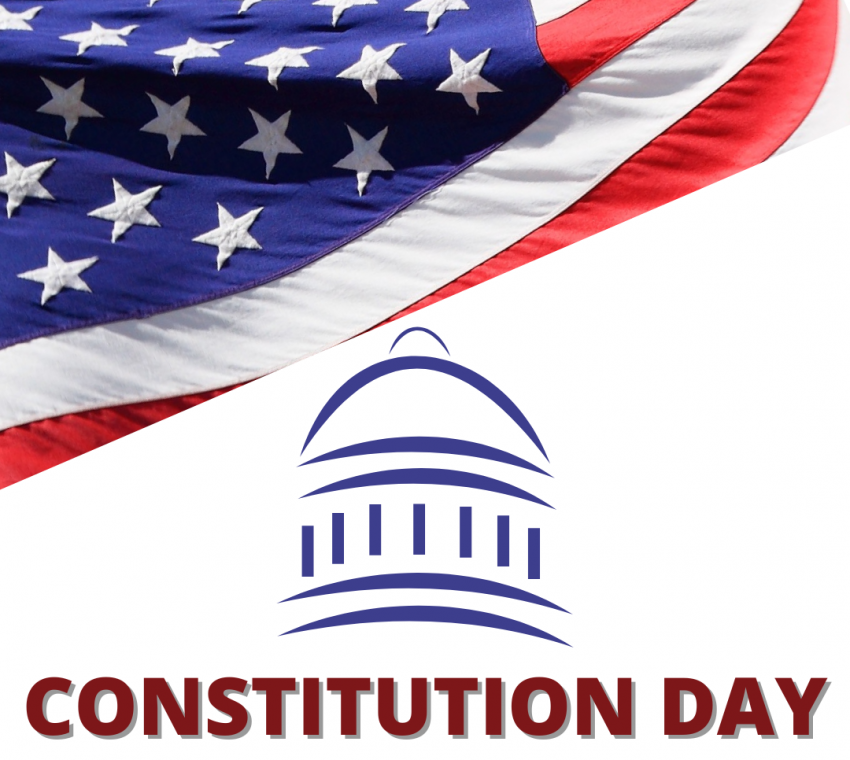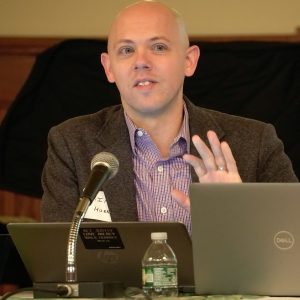In the United States, Sept. 17 is designated as Constitution Day. The holiday commemorates the signing of the U.S. Constitution in Philadelphia on Sept. 17, 1787. The Constitutional Convention, made up of delegates from 12 states, met beginning in May 1787 to draft the document.
Why Should Christians Care?
The original draft of the Constitution made no mention of God or religion. It was a legal document with the purpose of creating a government to “form a more perfect union, establish justice, insure domestic tranquility, provide for the common defence [sic], promote the general welfare, and secure the blessings of liberty to ourselves and our posterity.” So why does Constitution Day matter to Christians?
The Need to Protect Individual Rights
During the ratification process—mostly in 1787-1788—some people objected that the Constitution did not do enough to protect the individual rights of citizens. So, a Bill of Rights was drafted and sent to states on Oct. 2, 1789. Originally containing 12 amendments, the Bill of Rights was reduced to 10 amendments. On Dec. 15, 1791, it officially became part of the U.S. Constitution.
Rights for Whom?
The Constitution only initially guaranteed rights to some persons. For example, in the enumeration of persons to be taxed, enslaved persons were counted as three-fifths of a person. Known as “The Three-Fifths Compromise,” its inclusion means that the rights of enslaved persons were denied as a compromise to make progress in drafting the document. This unjust and unequal language remained in the Constitution until being repealed by the 14th Amendment in 1866.
Church and State in 18th Century America[1]
Prior to the Revolutionary War, nine of the original 13 colonies had established support for a particular expression of religion—Congregationalists in New England, Catholics in Maryland, Anglicans mainly in the South—but remained at least tolerant (for the most part) of other religious expressions.
After the war, many colonies moved in non-establishment directions. By the time the Constitution and Bill of Rights were written, the relationship between government and religion was already complex and varied. Seven states still prohibited clergy by law from serving in political office. On the other hand, many states required profession of Christianity to run for office by using religious tests as a qualification for holding public office.
The First Amendment
This is the context from which the First Amendment arose. It reads:
“Congress shall make no law respecting an establishment of religion, or prohibiting the free exercise thereof; or abridging the freedom of speech, or of the press; or the right of the people peaceably to assemble, and to petition the Government for a redress of grievances.”
James Madison argued that the First Amendment was necessary. He believed religion and government are both better off when neither controls the affairs of the other. But the line of separation between the two was, and still is, ambiguous. As Mark Toulouse notes, the meaning of the first 16 words of the First Amendment (found above) have been debated more than any other sentence in the history of the English language.
The Establishment Clause
These 16 words comprise two clauses. The first is known as the Establishment Clause: Congress is prohibited from establishing a state-sponsored or supported religion. Forming the basis for the concept of “separation of church and state,” it rests on the principle of neutrality or non-endorsement, seeking to guarantee “that no particular form of religion holds any kind of peculiar advantage in the public life of the nation.”
This is not the same as guaranteeing a secular public square, Toulouse says. Rather, by being secular, “the Constitution guarantees the opposite, that religion is free to speak in public ways, according to the dictates of the religious conscience.”
The Free Exercise Clause
While the Establishment Clause gives citizens freedom from particular structures of government, the Free Exercise Clause—“or prohibiting the free exercise thereof”—grants citizens freedom for exercising religion according to their conscience.
In practice, the two clauses can sometimes be in tension with each other. When they conflict, those who believe non-establishment takes precedence are considered strict separationists. Those who prioritize free exercise of religion over non-establishment are known as accommodationists.
The Shifting Nature of Religious Freedom
In the first 150 years following the ratification of the Constitution and Bill of Rights, the Establishment Clause and Free Exercise Clause faced very few legal challenges. Because American culture represented Protestant values in many ways, and religious pluralism and secularization were not yet as widespread as they are today, American Protestants enjoyed a privileged status in public life. Catholics received similar privileged status, but attained it much more gradually, and never as fully, as Protestants did.
By the mid-20th century, both religious and non-religious people had become more committed to the Enlightenment ideal of religious life as an individual pursuit, bracketed out as separate from public life. Second, an increase in pluralism contributed to pushing religion even further into private life. The result was a lowest common denominator approach to American public life where religion was, and remains, largely absent.
Religious Freedom in Practice
Such an approach tends to benefit the majority, and in this case it has. Protestants and Catholics have seldom had to fight for the right to freely exercise their religion. As a result, until recently nearly all legal challenges appealing to the Free Exercise Clause came from minority religious groups.
Christianity is still the majority religious affiliation in the United States, and it’s not even close. The Pew Research Center estimates that in 2020, 64 percent of Americans were Christian.[2] But that percentage is shrinking, and could fall below 50 percent by 2070. Even so, it will remain the largest religious group in the United States with no close second.
Equal Protection Under the Law
In today’s context, the Establishment Clause and the Free Exercise clause remain essential. The first maintains the principle of neutrality by not establishing, endorsing, or privileging one religion over another. The second protects the right to free exercise of religion in public.
Both follow a well-known teaching of Scripture: “Do to others as you would have them do to you” (Luke 6:31, NRSV). Christians expect others to support Christians’ freedom to exercise faith in public. Thus, Christians also ought to support the rights of others to exercise their religious beliefs (or lack thereof) with equal protection under the law.
Public vs. Private Religion
Toulouse argues that the Founders envisioned a nation free from “the bonds of tradition and outside authorities, whether church or state.” The aim was not to form a Christian nation. But neither was it to form a nation free from any public religious discourse. “In spite of their commitment to the Enlightenment value of individual autonomy, the Founders, including people like Washington, Jefferson, Franklin, and Madison, all had a fairly clear sense of public virtue,” Toulouse says.
Toulouse believes that today, emphasis on “personal rights” has replaced the seeking of public virtue. Richard Neuhaus calls this “the naked public square”: religion has been so privatized that the public square is absent of any meaningful religious discourse.
In Search of the Common Good
Like Toulouse, I interpret the First Amendment as protecting religious freedom in two ways. First, it does not prioritize one religion over another. Second, it encourages a vision of public life where persons of differing beliefs and commitments seek a common good in which all persons can flourish. In such a vision, says Linell Cady, “a specific religious tradition or community appropriates its distinctive resources to contribute to the upbuilding of the common life.”[3]
This Constitution Day, consider how your specific religious tradition or community can provide a distinctive voice in the public square, in a joint effort with others for the seeking of the common good for all persons.
The Rev. Erik Hoeke is a communications strategist at Pittsburgh Theological Seminary and an ordained elder in the United Methodist Church.
[1] I am indebted to Mark Toulouse’s God in Public: Four Ways American Christianity and Public Relate (Louisville: Westminster John Knox Press, 2006) for many ideas expressed in this piece, and all quotes of his come from the first two chapters of this book. It is a great introduction to some of the constitutional contexts in which religion and public life are considered in the United States.
[2] This figure includes Protestant, Catholic, Mormon, Orthodox Christian, Jehovah’s Witness, and others in the Christian Tradition.
[3] Linell Cady, Religion, Theology, and American Public Life (New York: SUNY Press, 1993), 23.


